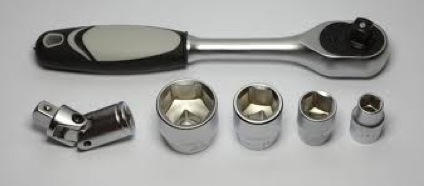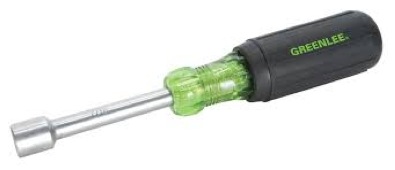Blog
What is the best way to use a wrench?

If you have a thread to turn, you need a wrench; it's that simple. What wrench to use will depend on whether the thread is on a nut, bolt or a pipe. Like with all tools, a wrench too is available in a vast variety. Among the most common are the pipe wrench and the crescent wrench, both of which are adjustable. Then there is the fixed type, commonly known as spanners and they are available as box, open or combination types.
The adjustable wrench has two jaws, one fixed heel jaw on the handle and the other, an adjustable hook jaw. A worm screw or a nut on a screw-thread arrangement adjusts the distance of the hook jaw from the heel jaw to suit the job. For spanners, you simply have to pick the right size to fit the nut or bolt.

The proper way to hold a wrench is by its handle. Turn the nut until the jaws match the job. Place the hook jaw (movable jaw) so that it will point towards the direction you want the job to rotate. For example, if you are closing or tightening a nut, you will normally have to rotate it clockwise and the hook jaw must then be placed to the left of the nut. Hold the handle and pull towards you. A pipe-wrench has serrated teeth on its jaws, which will bite into and clamp on to the pipe if you are pulling in the right direction, but will slip if you are not doing it the right way.
As the pipe-wrench has teeth and a strong grip, it can leave marks on whatever you are tightening. It is advisable to not use this tool on your nice plumbing fixtures, and reserve it for when you work under the sink. In addition, never use a pipe-wrench on nuts and bolts as this will usually damage the fastener.

When you have a lot of fastening to do, adjustable wrenches are not helpful; you need the socket wrench. This tool has a ratcheting mechanism on the head and attaches to various size heads via a square hub. Sets of sockets are available to fit almost all types of fasteners. The most common is the 3/8-inch square driving mechanism along with a socket set of mostly six-point sockets.
The ratcheting device of the socket wrench is its biggest advantage. This device holds in place when you are pulling in one direction and releases when you pull in the opposite direction. This allows quick tightening without having to remove and refit the wrench after each turn. Additionally, you get a nice leverage with the long ratchet handle. Make sure of using the right size of socket for the fastener. The torque provided by a socket wrench is quite high, and it is easy to round off the edges of the nut or bolt if you are not using the right size.
If you need less torque, a nut-driver is a suitable tool. This looks very much like a screwdriver, but has a socket wrench at its end to tighten or loosen a nut or a bolt.


